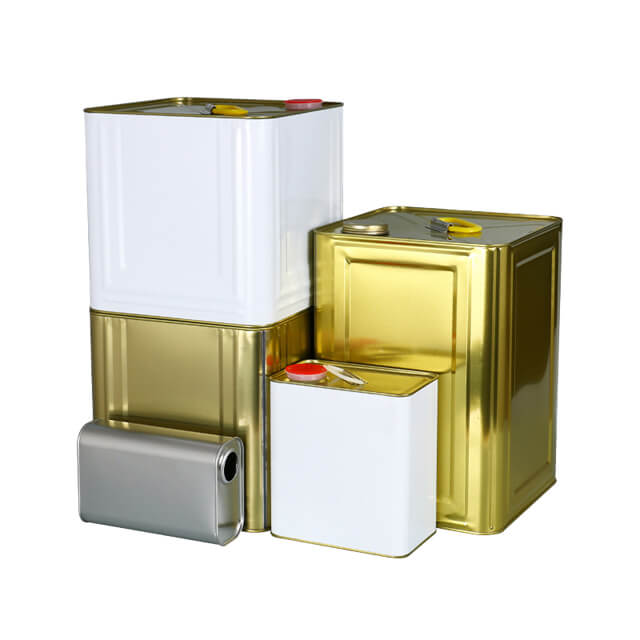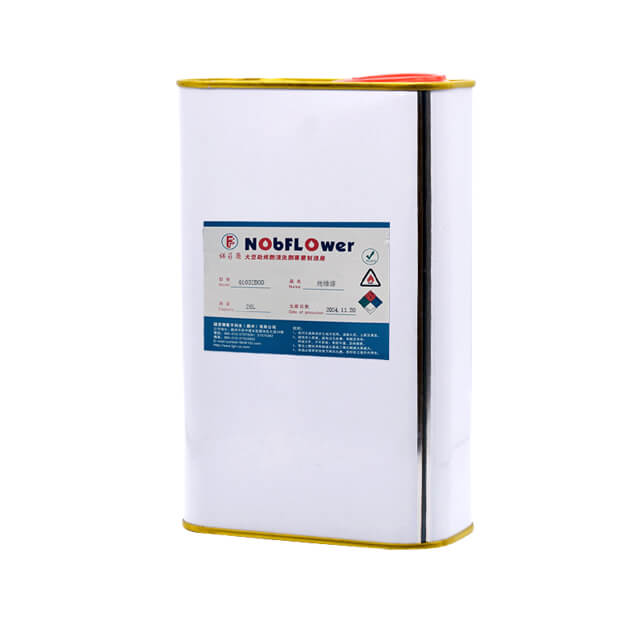Views: 1 创始人: Site Editor Publish Time: 2024-12-10 Origin: Site








What
is conformal coating? Conformal coating is a specially formulated coating used
to protect circuit boards and related equipment from environmental damage.
Conformal coating has good resistance to high and low temperatures; After
curing, a transparent protective film will be formed, which has excellent
insulation, moisture-proof, anti-leakage, shockproof, dust-proof,
anti-corrosion, anti-aging, corona resistance and other properties. Under
realistic conditions such as chemistry, vibration, high dust, salt spray,
humidity and high temperature, the circuit board may be corroded, softened,
deformed, mildewed, etc., which can lead to the failure of the circuit board.
The conformal coating is applied to the surface of the circuit board to form a
protective film with the functions of moisture-proof, salt-spray-proof and
mildew-proof. In the presence of chemicals (e.g., fuel, coolant, etc.),
vibration, moisture, salt spray, humidity and high temperatures, uncoated
circuit boards may be corroded, mold and short circuits can occur, resulting in
circuit failure, and the use of conformal coating can protect the circuit from
damage, thereby improving the reliability of the circuit board, increasing its
safety factor and ensuring its service life. In addition, because the conformal
coating prevents leakage, it allows for higher power and smaller PCB spacing,
which can meet the needs of component miniaturization. In the actual production
process, the correct use of conformal coating is the key to ensure the quality
and performance of the circuit board. From the perspective of the
characteristics of the conformal coating itself, it provides multi-faceted
protection for the circuit board, which plays an indispensable role in meeting
the function of the circuit board itself under harsh environmental conditions
and meeting the function of the circuit board itself. For example, the presence
of conformal coating greatly reduces the risk of failure of the circuit board
in terms of protecting it from chemical attack and environmental factors such
as vibration, moisture, salt spray, etc., thereby improving its reliability and
extending its service life.
Specifications
and requirements of the conformal coating process Painting requirements:
<!--[if !supportLists]-->1. Paint thickness: Paint film thickness should be controlled at 0.05mm - 0.15mm, dry film thickness is 25um - 40um.。
<!--[if !supportLists]-->2. <!--[endif]-->Secondary coating: In order to ensure
the thickness of products with high protection requirements, secondary coating
can be carried out after the paint film has cured (whether to carry out
secondary coating according to the requirements).
<!--[if !supportLists]-->3. <!--[endif]-->Inspection and repair: Visually inspect
the coated circuit board to meet quality requirements and fix the problem. For
example, if the pins and other protected areas are stained with conformal
coating, you can use tweezers to clip absorbent cotton balls or clean cotton
balls dipped in washing water to scrub them clean, and be careful not to wipe
off the normal paint film when scrubbing.
<!--[if !supportLists]-->4. <!--[endif]-->Component replacement: After the paint
film is cured, if you want to replace the components, you can do the following: (1) directly solder the components with an electric soldering iron,
and then use a cotton cloth dipped in board water to clean the materials around
the pad; (2) welding of alternative components; (3) Use a brush dipped in conformal paint to brush the welded parts, and make
the surface of the paint film dry and solidify.
Operational
Requirements:
<!--[if !supportLists]-->1. <!--[endif]-->The conformal coating workplace is
required to be dust-free and clean, dust-free, must have good ventilation
measures, and prohibit unrelated personnel from entering.
<!--[if !supportLists]-->2. <!--[endif]-->Wear protective equipment such as masks
or gas masks, rubber gloves, and chemical protective glasses when operating to
avoid physical injury.
<!--[if !supportLists]-->3. <!--[endif]-->After the work is completed, the used
tools should be cleaned in time, and the container with conformal coating
should be sealed and covered tightly.
<!--[if !supportLists]-->4. <!--[endif]-->Anti-static measures should be taken for
the circuit board, and the circuit board should not be placed on top of each
other, and the circuit board should be placed horizontally during the coating
process.
Quality
Requirements:
<!--[if !supportLists]-->1. <!--[endif]-->There can be no paint flow and dripping
on the surface of the circuit board, and attention should be paid to the part
that does not drip into the local isolation when the brush is painted.
<!--[if !supportLists]-->2. <!--[endif]-->The conformal coating layer should be
smooth, bright, and uniform in thickness, and the surface of the pad, SMD
component or conductor should be protected.
<!--[if !supportLists]-->3. <!--[endif]-->The surface of the paint layer and the
components can not have bubbles, pinholes, corrugation, shrinkage holes, dust
and other defects and foreign substances, no chalking, no peeling, note: the
paint film is not dry before the surface, do not touch the paint film at will.
<!--[if !supportLists]-->4. <!--[endif]-->Locally isolated components or areas
should not be coated with conformal coating.
In
terms of the process of conformal coating, the specifications and requirements
involve painting, operation, quality and other aspects. There is a clear
control range of thickness when painting, and secondary coating can be carried
out according to the protection requirements, and there are also operational
requirements such as subsequent inspection and repair and component
replacement. Workplaces, personnel protection, tool cleaning, and anti-static
and placement requirements for circuit boards are all required to ensure safe
and effective operations. The quality requirements specify in detail the
appearance state of the circuit board after the surface is coated with
conformal coating, from the absence of flow paint, dripping to the smoothness,
brightness, and no defects of the paint layer. There are also clear
classification regulations for parts and devices that cannot be coated with
conformal coating, and for special cases, they can be specified by the R&D
department or coated according to the drawings. In the spraying process, there
are detailed precautions for the process edge width, size range, component
height, and distance between spraying and non-spraying areas of PCBA, and the
cleaning and drying conditions and some non-sprayable components are emphasized.
Parts
and devices that cannot be coated with conformal coating
<!--[if !supportLists]-->1. <!--[endif]-->Conventional non-coatable devices:
high-power radiators, heat sinks, power resistors, high-power diodes, cement
resistors, DIP switches, potentiometers (adjustable resistance), buzzers,
battery holders, fuse holders, IC
holders, tact switches, relays and other types of sockets, pin headers,
terminal blocks and DB9, plug-in or SMD light-emitting diodes (non-indicative), digital tubes,
grounding screw holes.
<!--[if !supportLists]-->2. <!--[endif]-->The parts and devices that are not
allowed to use conformal coating as specified in the drawings.
<!--[if !supportLists]-->3. <!--[endif]-->Devices that cannot be conformal by conformal coating are specified in the details of the "Catalogue of Non-Conformal Components (Regions)". If the conventional non-coatingable devices in the regulations need to be coated, they can be coated by the R&D department to specify the requirements or the drawings to mark the three-proof coating.


Precautions
for the conformal coating process
<!--[if !supportLists]-->1. <!--[endif]-->The PCBA must be set with a process edge and the width cannot be less
than 5mm, so that it is easy to walk the track on the machine.
<!--[if !supportLists]-->2. <!--[endif]-->The maximum length and width of the PCBA board is
410*410mm, and the minimum
is 10*10mm.
<!--[if !supportLists]-->3. <!--[endif]-->The height of the components placed in the PCBA is up to
80mm.
<!--[if !supportLists]-->4. <!--[endif]-->The minimum distance between the spraying area and the
non-spraying area of the components on the PCBA is 3mm.
<!--[if !supportLists]-->5. <!--[endif]-->Thorough cleaning ensures that corrosive
residues are completely removed and that the conformal coating adheres well to
the surface of the board. The thickness of the paint should be between 0.1 - 0.3mm. Baking conditions: 60 °C, 10-20 min.
<!--[if !supportLists]-->6. <!--[endif]-->In the process of spraying, some
components are not sprayable, such as: high-power with heat dissipation surface
or radiator components, power resistors, power diodes, cement resistors, DIP
switches, adjustable resistors, buzzers, battery holders, fuse sockets (tubes), IC holders, tact switches, etc.
Introduction
to Conformal Coating Rework of Circuit Board When the circuit board needs to be
reworked, the expensive components on the circuit board can be taken out
separately and the rest can be discarded. However, the more common approach is to remove all or part of the protective film on the board and replace the
damaged components one by one. When removing the conformal coating film, make
sure that it does not damage the substrate underneath the component, other
electronic components, and structures near the rework location. The removal
methods of the protective film mainly include: the use of chemical solvents,
micro-grinding, mechanical methods and desoldering through the protective film.
The use of chemical solvents is the most commonly used method of removing
conformal coating protective film, the key to which lies in the chemical
properties of the protective film to be removed and the chemical properties of
the specific solvent. Micro-grinding is the use of high-speed particles ejected
from the nozzle to "grind" off the conformal coating protective film on the circuit board. The
mechanical method is the easiest way to remove the conformal coating protective
film. To remove soldering through the protective film, a discharge hole is made
in the protective film so that the molten solder can be discharged.
When
a circuit board needs to be reworked, there are several ways to deal with it.
Expensive components can be removed and the rest can be discarded, or damaged
components can be replaced after some or all of the protective film is removed.
There are various methods to remove the protective film, including chemical
solvent method, micro-grinding method, mechanical method and desoldering method
through the protective film, each of which has its own characteristics and
application scenarios. In short, conformal coating plays an extremely important
role in the production, use and maintenance of the entire circuit board, and
the strict control of each link helps the circuit board to better play its
function and ensure the stability of its performance.
 苏公网安备32058302004438
苏公网安备32058302004438